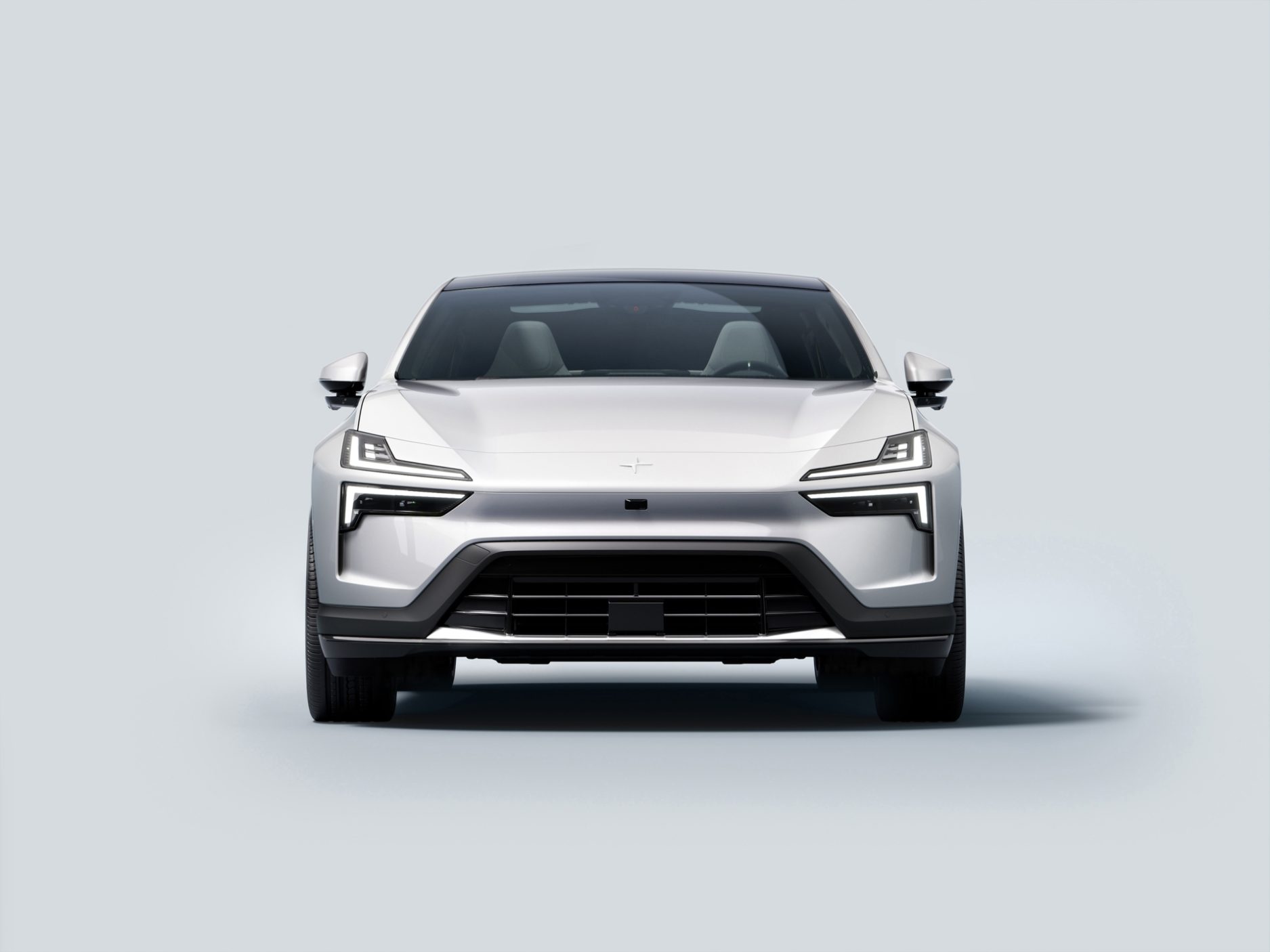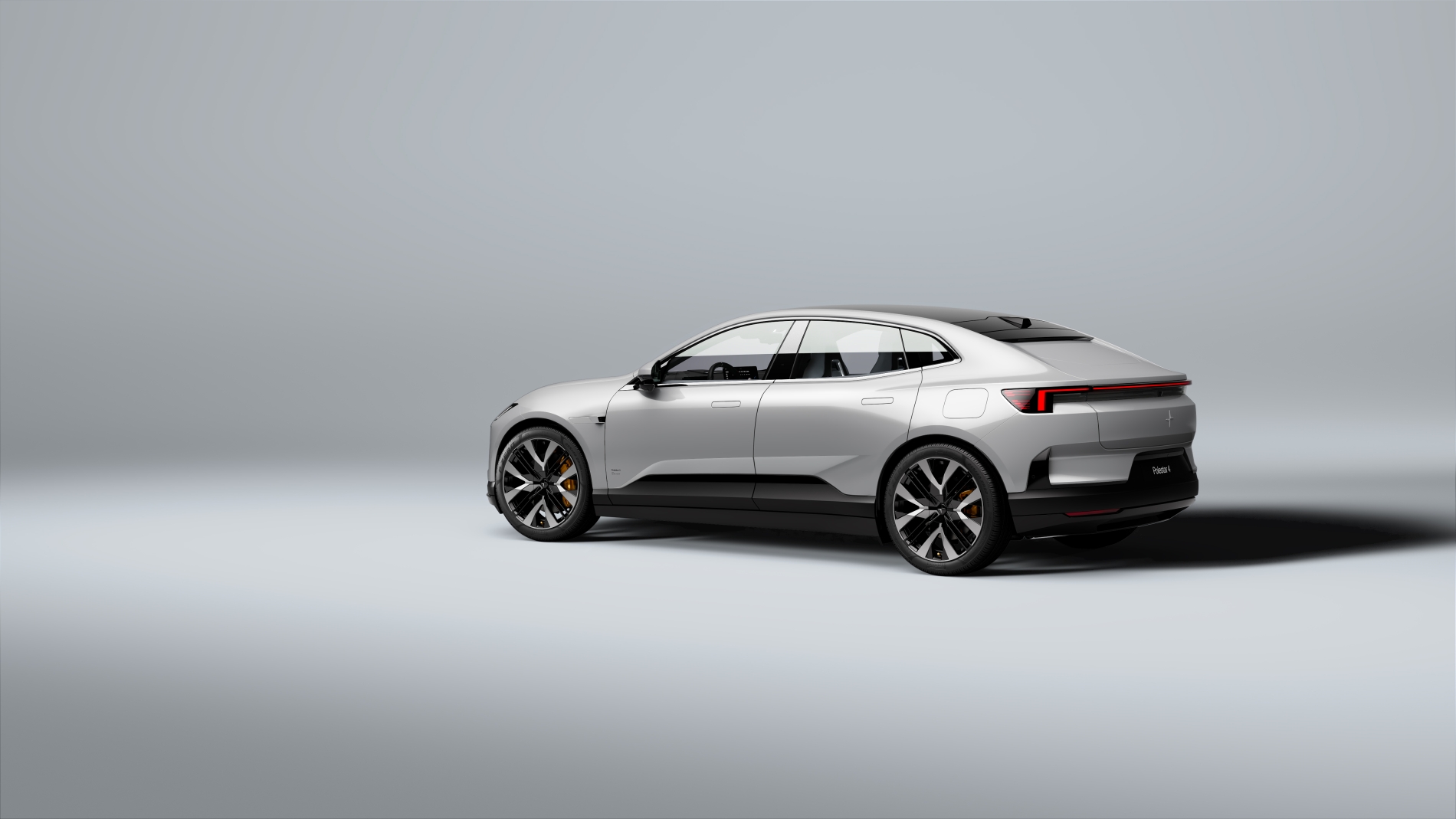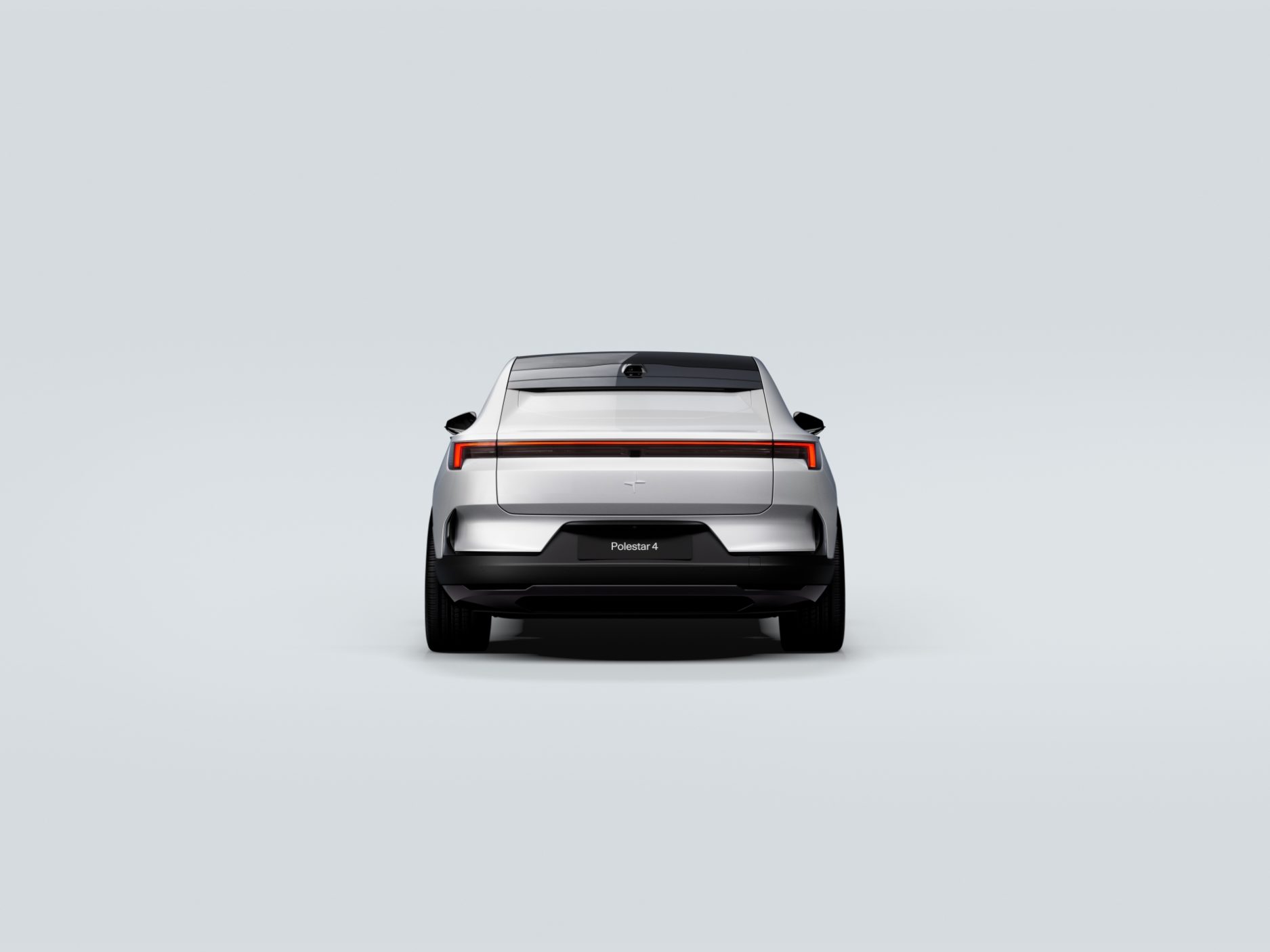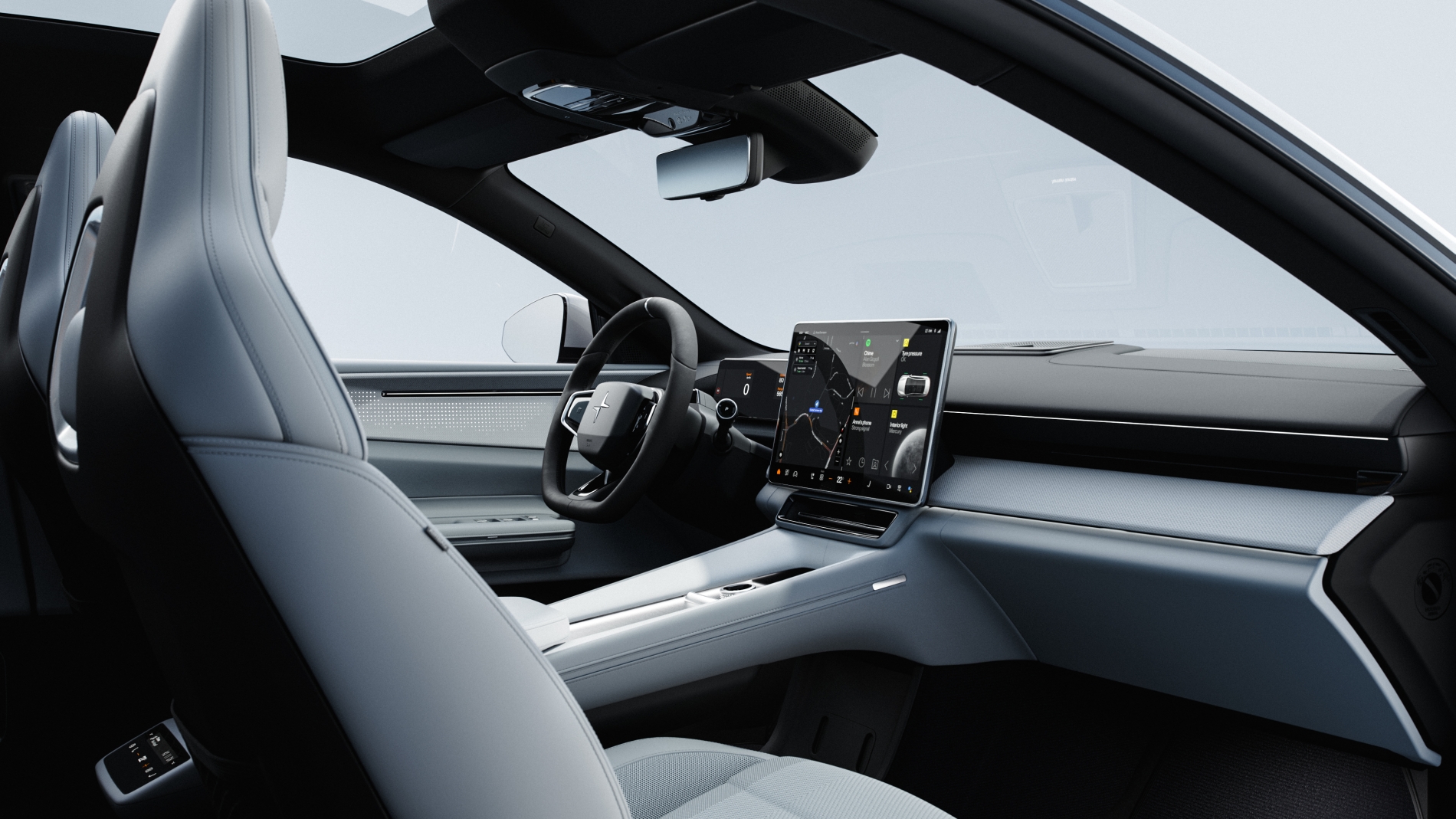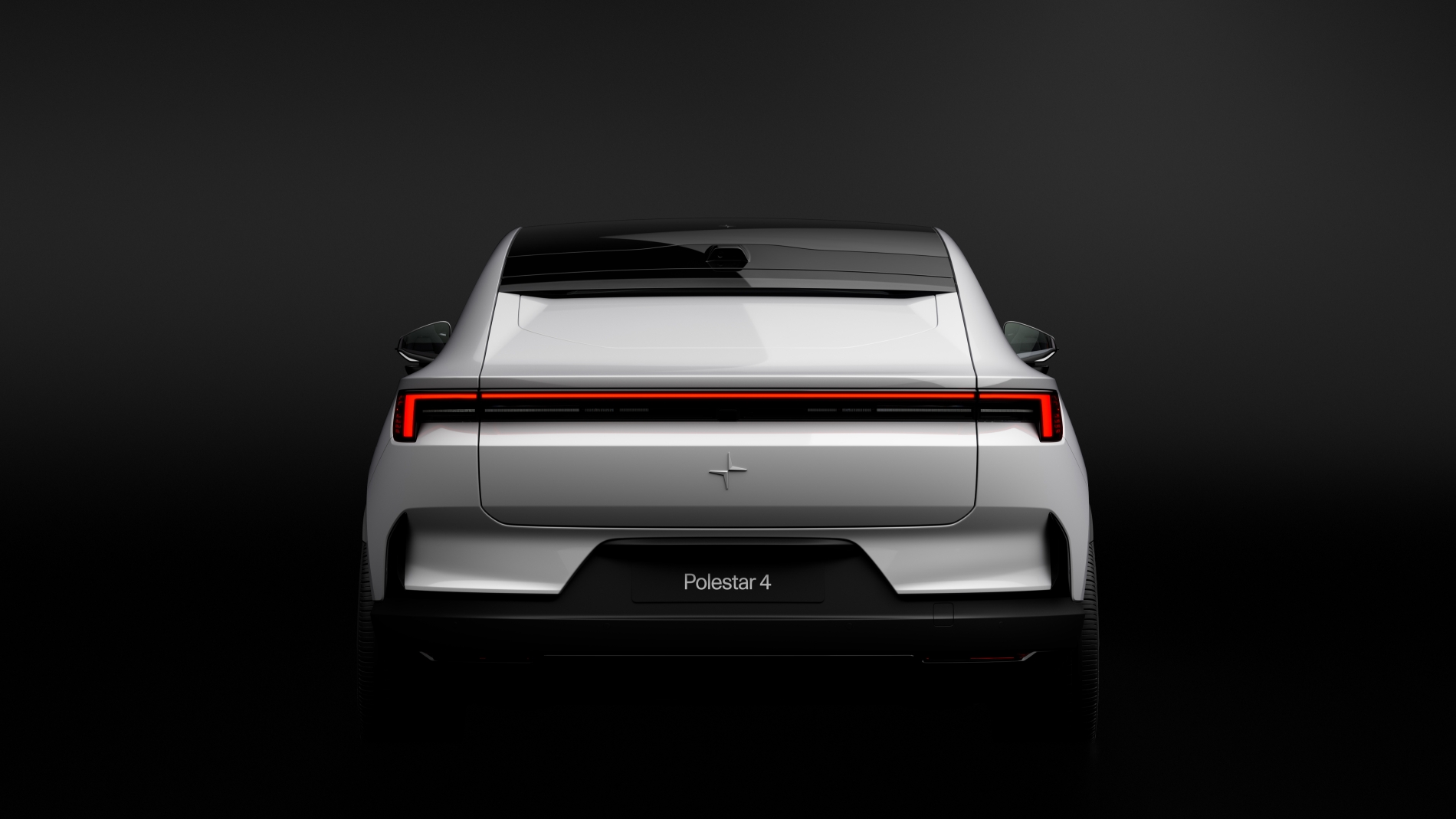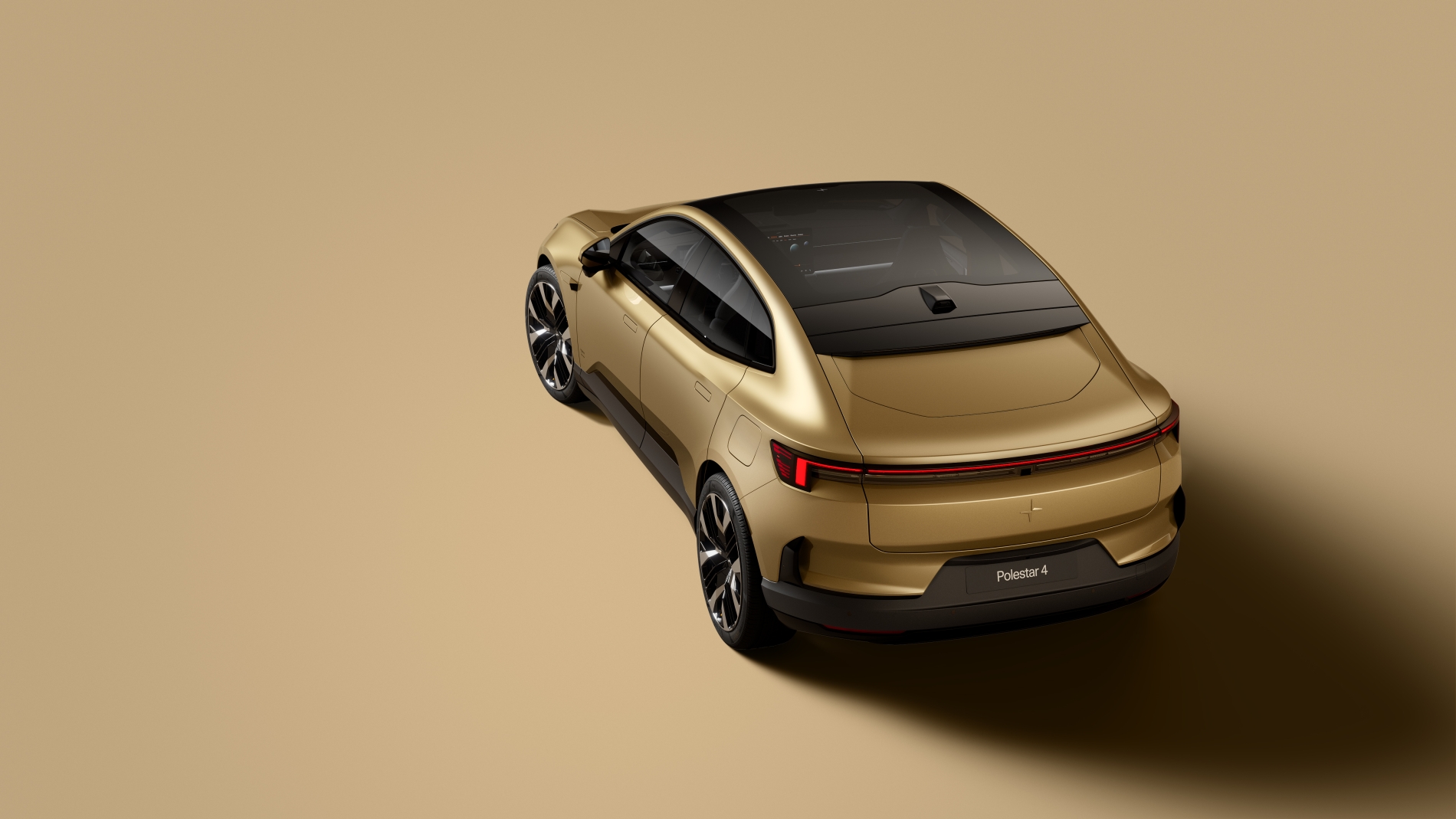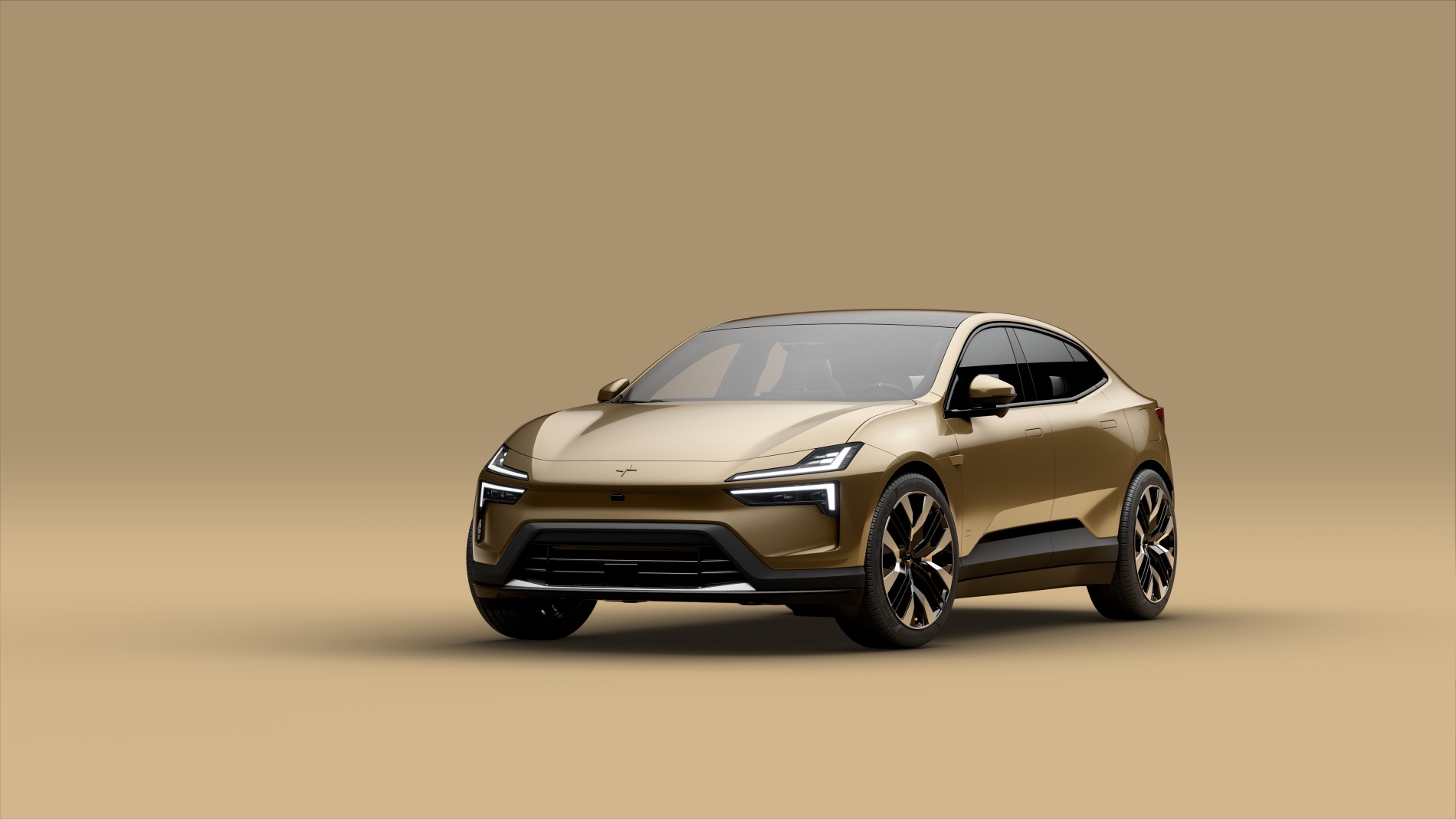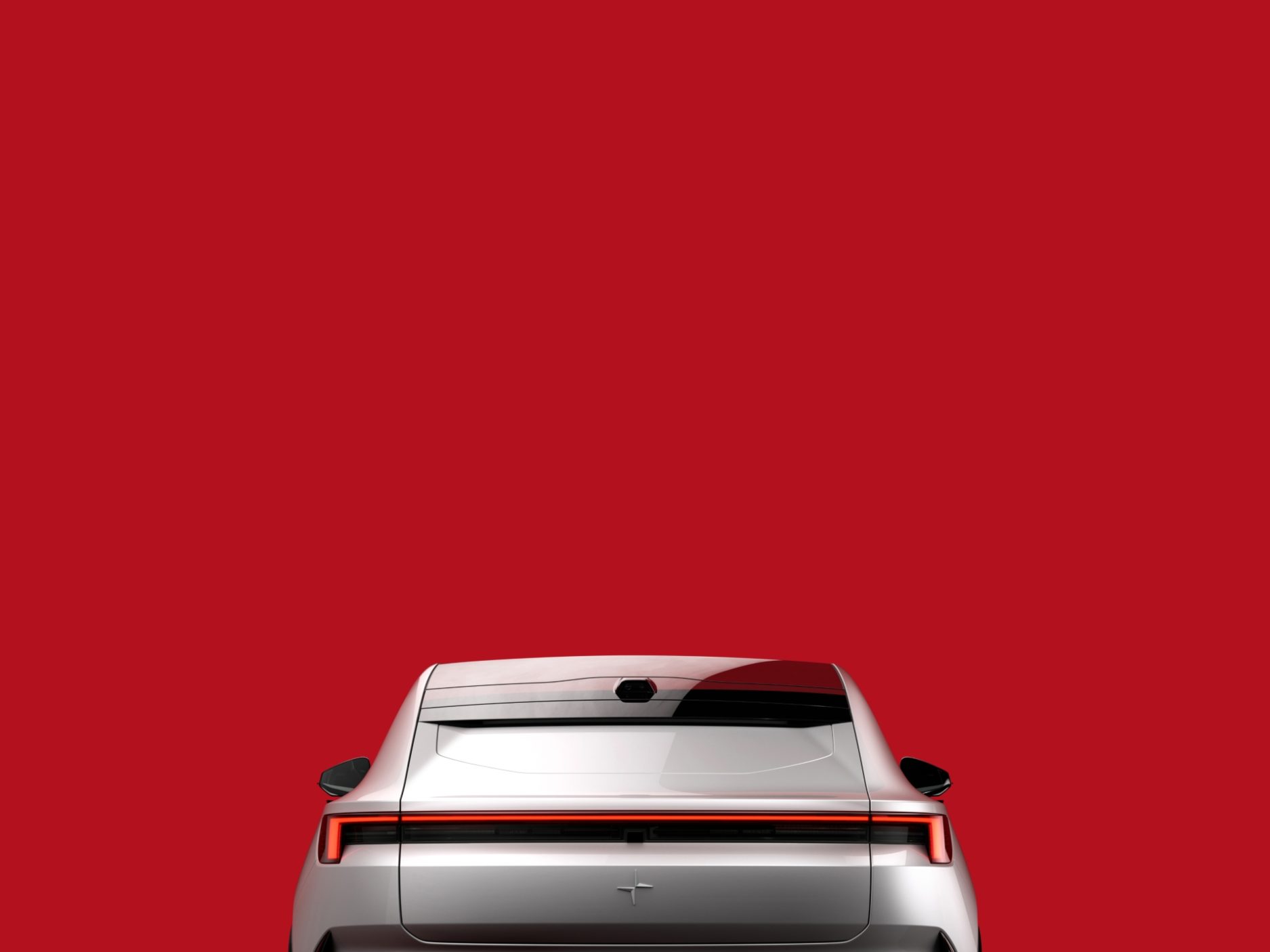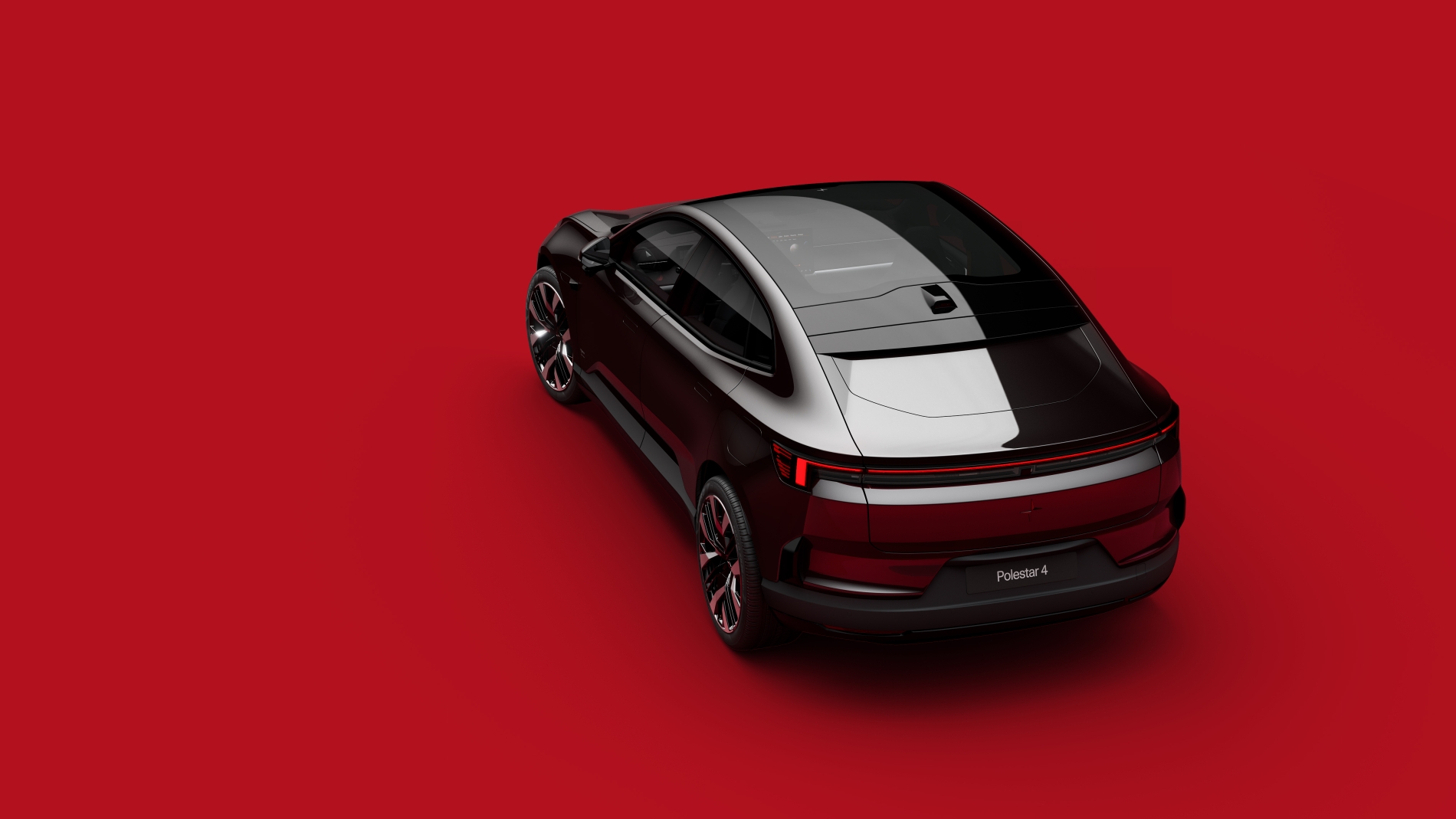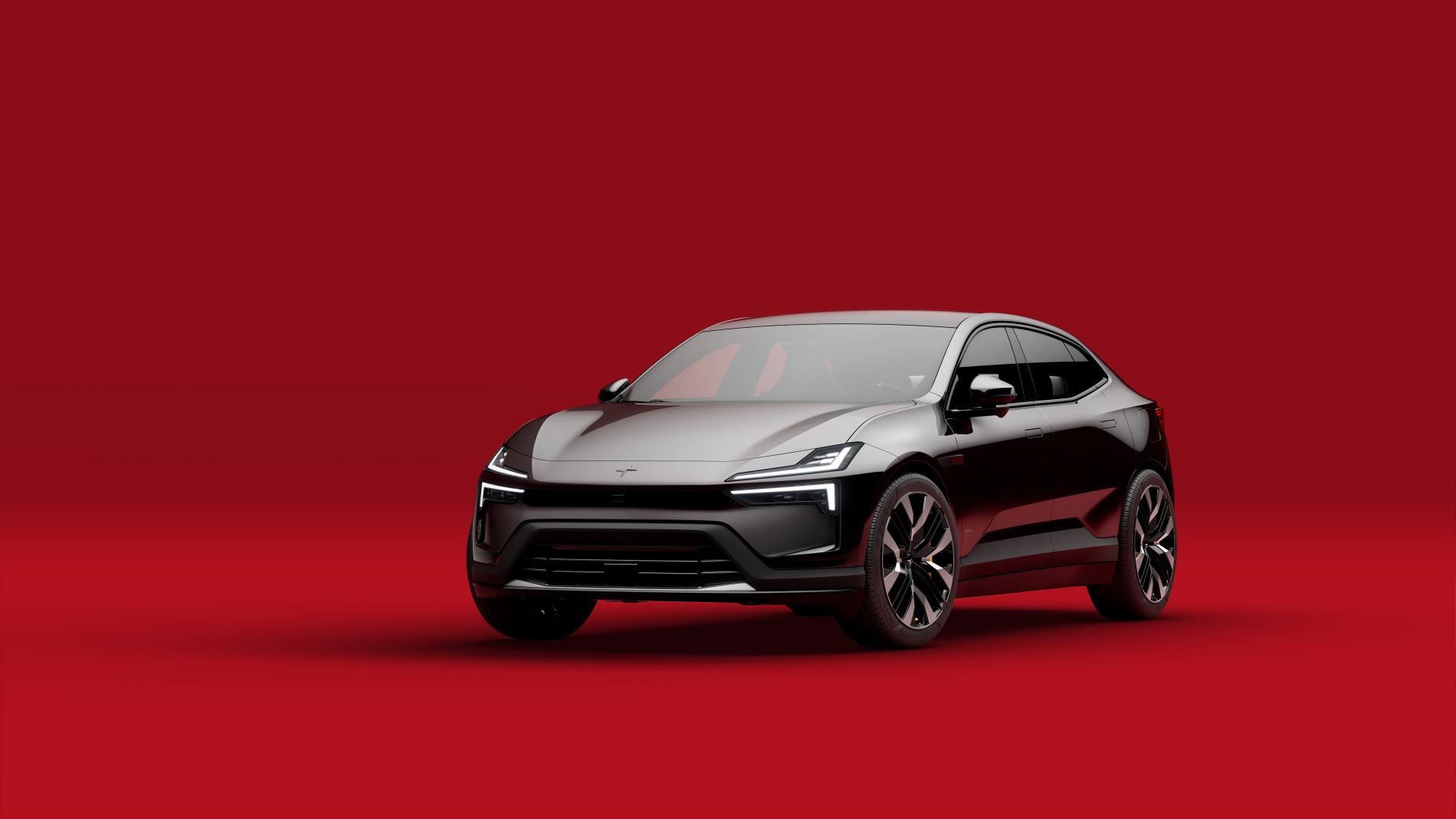Polestar introduces Polestar 4
Polestar has recently launched the Polestar 4, which is the brand’s second SUV in its lineup. This electric performance SUV coupé is a unique vehicle that combines the best of both worlds – the aerodynamics of a coupé and the spaciousness of an SUV. Moreover, the design of the Polestar 4 incorporates key elements from Polestar’s concept cars, making it the fastest Polestar production car yet. It’s worth noting that this vehicle is positioned between the Polestar 2 and Polestar 3 in terms of size and price.
As a design-driven brand, Polestar has taken great care to incorporate several design elements from the Polestar Precept concept car into the Polestar 4’s design. For instance, the rear window has been eliminated to create a new immersive rear occupant experience, and the dual blade front lights have a unique Polestar light signature that’s complemented by the Polestar emblem with millimeter-precision lighting from below.
In terms of aerodynamic efficiency, the Polestar 4 boasts several features, including a low nose, retractable door handles, flush glazing with frameless windows, rear aero blades, and air flow optimization around the rear light bar.
The Polestar 4 is built on the Sustainable Experience Architecture (SEA) developed by Geely Holding. This D-segment SUV coupé has a large body and a long wheelbase of 2,999 mm. Additionally, the vehicle’s overall length is 4,839 mm, width is 2,139 mm, and height is 1,544 mm. The spacious interior of the vehicle is especially evident in the rear, where occupants can enjoy reclining seats in an intimate environment. The adjustable ambient lighting inspired by the solar system adds an extra dimension to the interior, allowing the driver to customize the driving environment.
The Polestar 4 comes equipped with a full-length glass roof that can be customized with optional electrochromic functionality. This feature enables the driver to switch between an opaque or transparent roof depending on their preference. By eliminating the rear window, the glass roof stretches beyond the rear occupants’ heads, creating a unique interior ambiance. The vehicle also features a secondary media and climate control screen located between the front seats, which enables rear occupant control.
Unlike traditional cars, the Polestar 4 replaces the rear-view mirror with a high-definition screen that shows a real-time feed from a roof-mounted rear camera. This feature provides a wider field of view for drivers than most modern cars, and the digital feed can be deactivated to allow drivers to see rear occupants if needed.
The Polestar 4’s interior and its materials have been designed around the theme of ‘soft tech’, drawing inspiration from the fashion and sportswear industries. The car is available in new exterior colours, Storm and Electron, and a unique new interior colour, Mist. Circular and low-carbon materials replace traditional solutions in the Polestar 4, and measures have been taken to ensure greater supply chain transparency, including blockchain traceability for risk materials in the batteries.
The new Polestar 4 model features a mono-material approach for its interior materials, which was initially presented in the Polestar electric roadster concept last year. This method involves producing all layers of certain components from the same base material, allowing for more efficient and effective recycling by eliminating the need for incompatible materials to be separated before recycling.
Polestar 4 introduces new interior materials, including a tailored knit textile made of 100% recycled PET, along with bio-attributed MicroTech vinyl and animal welfare-secured Nappa leather upholsteries. The tailored knit upholstery is a unique technique for the automotive industry, developed in collaboration with the Swedish School of Textiles and suppliers, and produces no offcuts, reducing overall waste.
Other sustainable materials used in the Polestar 4 include inlay carpets made from recycled PET, floor carpets made from ECONYL, which includes reclaimed fishing nets, and door trim panels made from NFPP (natural fibre polypropylene), resulting in up to 50% less virgin plastic and a weight saving of up to 40%. MicroTech, a bio-attributed vinyl that replaces crude oil with pine oil in its construction, is also featured in Polestar 4, as previously introduced in the Polestar 3 model.
Polestar 4 boasts the title of the fastest production car ever developed by the brand, with a maximum power output of 400 kW (544 hp) and a 0-62 mph acceleration time of just 3.8 seconds. The vehicle is equipped with permanent magnet, synchronous motors that offer sharp steering and handling responses, delivering a thrilling and nimble driving experience. Customers can choose between dual- and single-motor versions, with the latter featuring rear-wheel drive. Despite the high performance, the car is designed to offer responsible and enjoyable EV driving on a daily basis.
The Long Range Dual Motor version features a 102 kWh battery, 400 kW (544 hp) and 686 Nm of torque, along with a preliminary range target of up to 350 miles WLTP. A disconnect clutch enables the front electric motor to disengage when not needed, optimizing range and efficiency.
The dual-motor version comes with semi-active suspension that provides additional adjustment between comfort and performance dynamics, and customers can choose from 20 to 22-inch wheels, depending on the version, with tyres supplied by Pirelli and Michelin.
Polestar 4 offers up to 200 kW DC and 22 kW AC charging for all versions, and bi-directional charging is included with vehicle-to-load (V2L) capability at launch. The charge lid is motorised, and a heat pump is fitted as standard, allowing the car to take advantage of ambient heat during the cabin and battery preconditioning.
A new drive optimisation function allows the driver to select between range or performance driving modes in the Long range Dual motor version. Performance mode sharpens up responsiveness from the powertrain and engages both motors at all times for full power delivery and best performance. Range mode prioritises efficiency, adapting the powertrain to a calmer style and forces use of only the rear motor.
The Long range Single motor version features a 200 kW (272 hp) and 343 Nm motor at the rear and preliminary range target of up to 372 miles WLTP[2].
Polestar continues to push technology towards a more entertaining, connected and autonomous future in all its cars. In Polestar 4, the infotainment system powered by Android Automotive OS and the Snapdragon Cockpit Platform now utilises a 15.4-inch landscape-oriented screen.
With Google built-in, including Google Assistant, Google Maps and Google Play, Polestar continues to offer a leading connected experience. The close collaboration with Google allows Polestar to keep pushing the boundaries of the system.
A Harman Kardon audio system is available as an option with 12 speakers and 1,400-Watt channel-hybrid amplifier. An additional two headrest speakers are added to each front seat with the optional Nappa Pack– raising the total to 16. Naturally, Apple CarPlay is included.
As with all other Polestar cars, regular over-the-air (OTA) updates allow for new features and improvements to be sent remotely to all vehicles, removing the need to visit a workshop to gain the latest software.
Safety is part of Polestar’s DNA thanks to its strong connection to Volvo Cars and these safety genes are built into Polestar 4, which features leading safety technology inside and out – tested to the same exacting standards as all other Polestar cars. Up to nine airbags are included. New partnerships bring intelligent safety technology to the fore, including the SuperVision Advanced Driver Assistance System from Mobileye.
A total of twelve cameras, one radar and twelve ultrasonic sensors are fitted as standard. This includes a driver monitoring camera, which only relays data and does not record video, to monitor the driver’s eyes and head movements to help avoid incidents related to fatigue or incapacitation. Together with hands-on detection in the steering wheel, the driver monitoring system helps to keep the driver actively engaged in driving, as required.
A 10.2-inch driver display is mounted ahead of the steering column and includes speed, battery and range information. When engaged by various assistance systems, a virtual environment can show other road users, current driving assistance functions and navigation information. To reduce distraction, a head-up display (HUD) with 14.7-inch projection area in front of the driver relays key vehicle, telephony and navigation information to the windscreen, further improving driver attentiveness. A clever ‘snow mode’ function for the HUD switches the text colour from white to yellow, improving visibility in snowy environments.
The optional Pilot Pack includes enhanced Pilot Assist with lane change assistance, initiated by the driver tapping the indicator stalk in the desired direction.
Standard vehicle specification is high, with additional packages tailored to adding specific options that enhance overall enjoyment. The Plus Pack comprises comfort and technology upgrades, with the Plus Pro Pack adding a colour-coded body execution, the electrochromic glass roof and additional interior illumination. The Nappa Pack can be specified in addition to the Plus Pack, and includes animal welfare-secured Nappa leather upholstery with ventilation, massage and additional headrest speakers for the front seats.
The Pilot Pack includes Pilot Assist and its extended features. The Performance Pack increases the performance look and driving experience of the Long range Dual motor version, with 22-inch wheels, 4-piston Brembo brakes, Polestar Engineered performance chassis tuning and Swedish gold details for the brakes, seat belts and valve caps.
Polestar 4 launches first in China, with production planned to begin in Hangzhou Bay, China, in November 2023. The state-of-the-art Geely-owned production facility operates on 100% renewable electricity.
A full-scale launch for other markets, including in Europe, North America and Asia Pacific, is planned for early 2024 – with sales and production ramping up for these markets through the course of that year. All details for these markets will be presented in 2024. Indicative launch pricing is from EUR 60,000.


